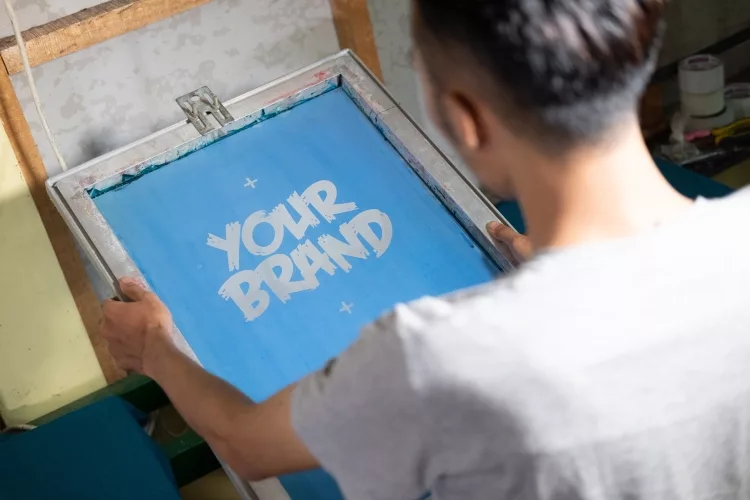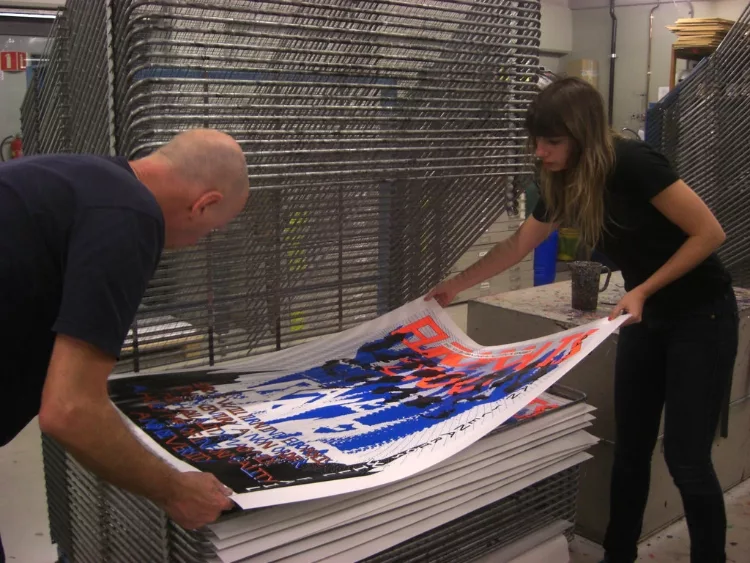DIY Screen Printing: Every Dettail You Should Know
by Anthony Clark
The act of customizing garments has become increasingly adopted in different parts of the world. This is because of its uniqueness and the message it passes to the audience. Hence, many people wish to practice screen printing without the help of experts and professionals. Screen printing is an exercise that relies on the use of stencils. A stencil is among the earliest types of graphic art duplications that were practiced after engraving and etching. Screen printing was developed in the 20th century. Since it was introduced into the graphic art sector, it has become a major form of advertisement. At any time the thought of DIY screen printing comes into your mind, you will remember the famous pop star called Andy Warhol. During his days, he bridged the gap between commercial design and fine art. Through his unrelenting effort, he produced repetitive screen prints of the famous Marilyn Monroe and Campbell's Soup can. If you want to become a better screen printing expert than Andy Warhol, you will need to read through some educative DIY content. Through this content, you will have excellent expertise to create an amazing screen print on your garment. If you become an expert, you can take it to the commercial scene by producing for your customers. The importance of producing screen-prints on garments necessitates the need to discuss the methods through which you can get it done yourself. With that said, today, I will be telling you how you can screen print without the guidance of a professional or expert.
Contents
The Basics of DIY Silk Screening

You might have been hearing about DIY screen printing in diverse names like screen printing, silk screening, or serigraphy. Many a time, the word is used in the world of fine art rather than commercial printing. That said, the basic process involved in DIY silk screening is forcing paint, dye ink, or other durable colored items. The printing is done by producing a stencil on a neat and fine mesh that is stretched on a frame. Then a squeegee is used to press the dye or ink through the stencil in the best manner you desire. The ink is spread on the stencil based on the design intended by you. Then you will get a thick layer of dye or ink. Through this method, the print made on the garment will become durable and withstand unfavorable weather conditions.
How to Perform DIY Screen Printing Task
1. Overlook the Mess
DIY screen printing has become a popular practice among different categories of people. When you are planning to create a screen print through a DIY process, you need to overlook the mess that comes from the ink or dye. The ink is always messy and may sometimes discourage you. Hence, you must be prepared for it. The messy nature of the work is not alien to an artist. However, you must prepare your mind for it. To scale through this hurdle, you can wear an apron or glove. You can also prepare a clean cloth and soapy water that can be used to clean the mess from on your exposed hands. When doing screen printing, you need to use a well-ventilated space. You can open the window, switch on your fan, and make the working environment look conducive to the work. Furthermore, there is no need for a dark environment. The most important thing is to maintain proper hygiene and ensure you work in a spacious environment.
2. Create a Design

Before proceeding to DIY screen printing, it is important to get a suitable design in place. The design is the foundation of all you want to do, meaning that you cannot screen print without getting a design. The design is placed on the stencil. If your stencil is having tiny lines, the lines may not appear the way you expect them. But if you are an expert in screen printing, this will not be a challenge. To produce an excellent DIY screen print, you can select a suitable design that has a beautiful shape and bold lines. When you choose this, your screen print will appear perfect because the shapes will cover up your imperfections.
3. Make a Stencil
Stencil is an important material that is needed for screen printing. You can mask out any part of your material to create a perfect stencil. There are different techniques through which you can produce a stencil that is suitable for reuse at any time point. Note that you must clean it after each use in case you desire to reuse it. Also, be informed that a mirror image of your design will be created when you place the stencil on the outer part of the stretched-fabric frame. If you are screen printing words on a garment, you will need to start with a mirror image of the words before proceeding to the proper screen printing. You can flip your design horizontally on image editing software to avoid any problem.
Furthermore, you may decide not to create your stencil manually. You can leverage technological advancement to create your stencil by using software, the internet, and modern digital printing device. When you surf the internet, you can copy a suitable image and edit it with excellent image editing software like Photoshop. After making the necessary edits, you can proceed to the screen printing task.
Ways of Making a Stencil
Nowadays, there are different methods through which you can create an intuitive stencil. The methods are discussed below.
1. Photo Emulsion Stencil
Photo emulsion stencil is famous among a wide range of artists and DIY screen printing individuals. You can make your stencil by using a newly purchased photo emulsion solution. This solution is manufactured with a sensitizer that is combined with emulsion before it is used. To use the emulsion, you need to make some important setup. You must set up a dark room and a dark room bulb. When screen printing, the emulsion is squeegeed on the screen in a thin layer. Then allow the screen to dry completely. Then tape your stencil on the screen using clear tape. Next, turn on the powerful lamp. Then the emulsion solution will let you know the next direction where you will place the bulb. Just ensure the power of the bulb is between 150 to 250 watts. Position the lamp above the stencil to have a critical overview of the process. When the process is completed, clean off the screen with soapy water and a piece of cloth. Then allow it to dry for the next use.
2. Glue Sealer Stencil
If the previously describe photo emulsion technique is difficult for you to use, you can use the glue sealer stencil. The process is simple and straightforward. It involves the use of glue sealer such as Mod Podge water-resistant glue. You don't need to use a dark room. The design created will be printed on paper but you won't use a photo emulsion to print on the design. All you need to use is water-based glue. To use the glue sealer stencil, lay your print on the stretched fabric frame. Then trace it with your pencil. Turn the frame over and mask the area you don't want the ink to touch, the negative space, and other spaces that the design will not cover. Then allow it to dry before commencing your printing process.
3. Vinyl-Cut Stencils
This is another straightforward method of creating a suitable stencil. The method saves time and energy. All you need to do is to cut your stencil with a vinyl cutter. You don't need to print on paper. You can cut the design depending on the way you want it. Most sign shops sell the design instead of the negative space, that is, the vinyl removed around the design. If this is what you have purchased, you can cut it in reverse to get it applied to the stretched fabric without any hassle. Once applied, the sign shop will provide you with a tape or transfer paper around the vinyl to peel it away. Carefully peel the sticky paper away. Then ensure you allow it to mask the unprotected areas of the vinyl. When you do this, the ink will not go over the space you don't want it. You also save extra ink when you use the vinyl-cut stencil.
Summary of DIY ScreenPrinting
The table below summarizes the materials needed for DIY silk screening and their functions.
| Materials | Functions |
| Squeegee | It is used to distribute ink or dye across the screen evenly. |
| Tape | It is used to block the ink from the screen where appropriate. |
| Ink or dye | The ink is used for printing. |
Conclusion on the Printing Technique
Silk screening is not difficult. You can perform excellent silk screening tasks through the DIY processes. Today, I have given a detailed guide to carry out a successful DIY silk screening task. You can go through the processes and produce a fantastic silk-screened garment. If you have a comment, you can use the comment box.
 |  |  |  |

About Anthony Clark
Anthony Clark always had a passion for digital drawing and printing ever since he was young. He would wander around his parents' house in Phoenix, Arizona drawing various things with his older digital tablet. Be it just a memory collection or a portrayal of anything: objects, parents, school, events, etc. He received his BA in Graphic Design at San Jose State University - the heart of Silicon Valley. Now Mr. Clark is excited to present his experience coupled with some colorful dips to help shape the future of printing.
Thoughts on "DIY Screen Printing: Every Dettail You Should Know"
 |  |  |  |
Get some FREE Gifts. Or latest free printing books here.
Disable Ad block to reveal all the secret. Once done, hit a button below
 |  |  |  |